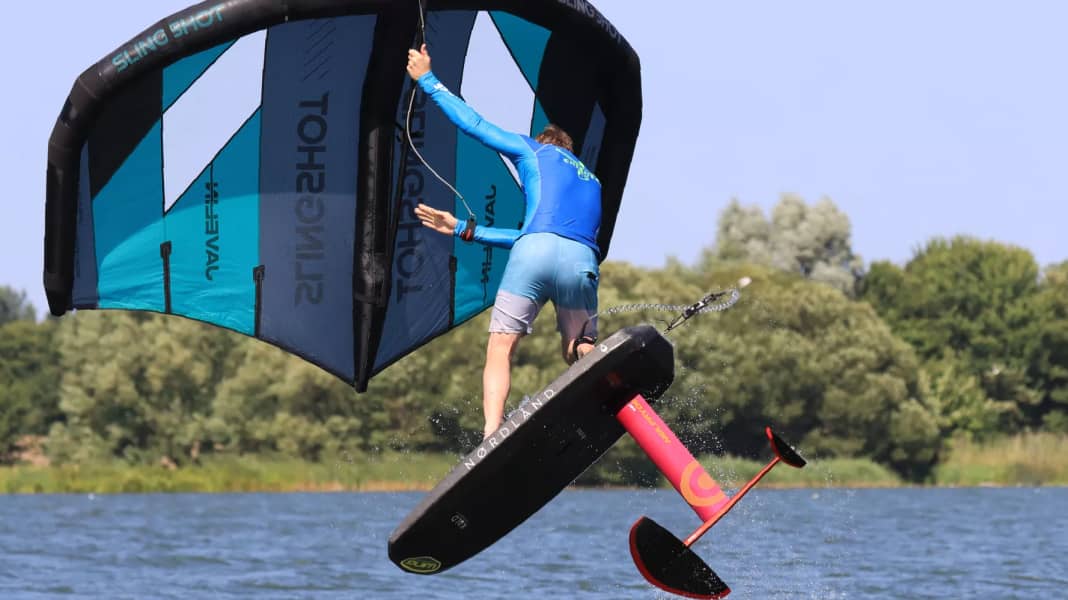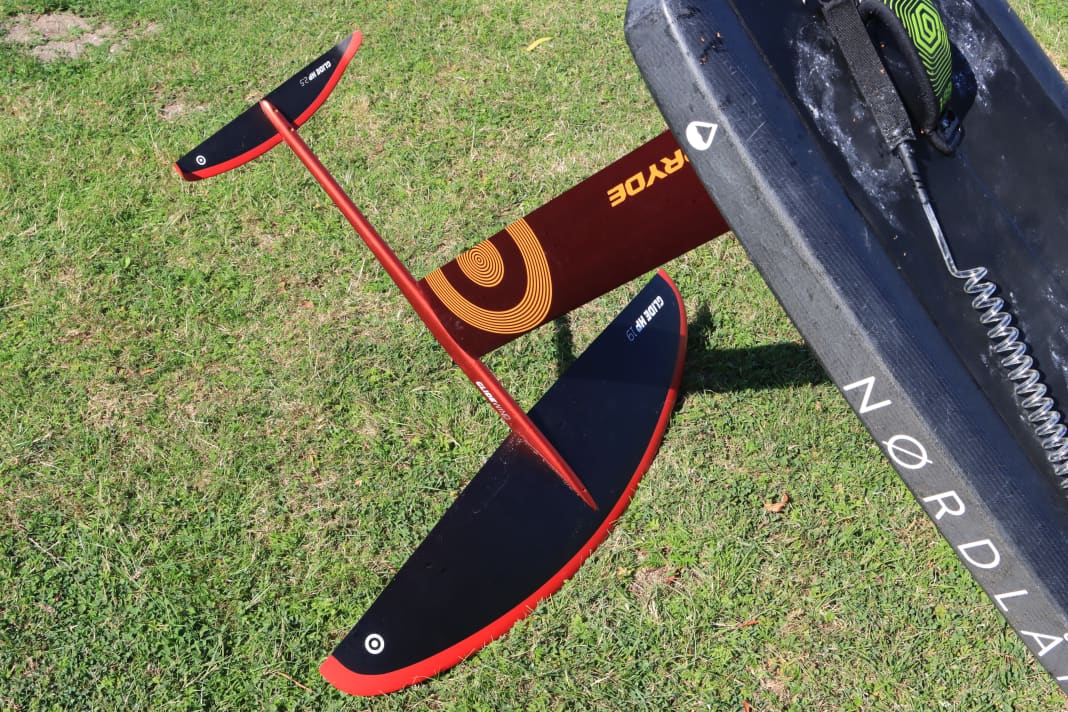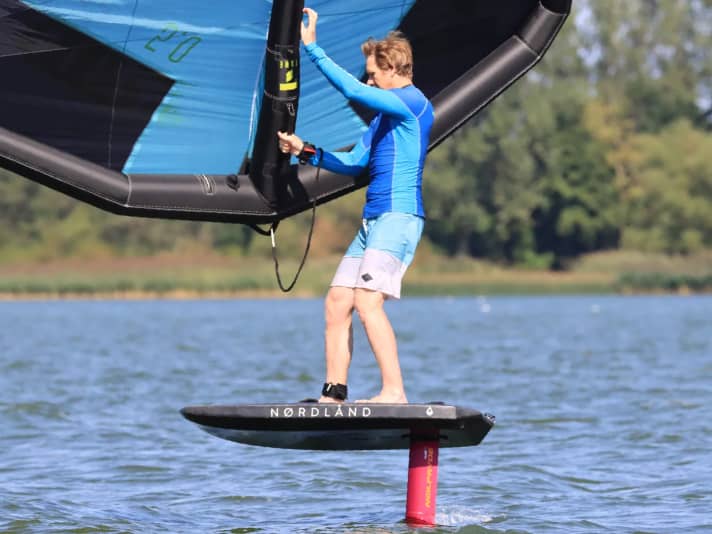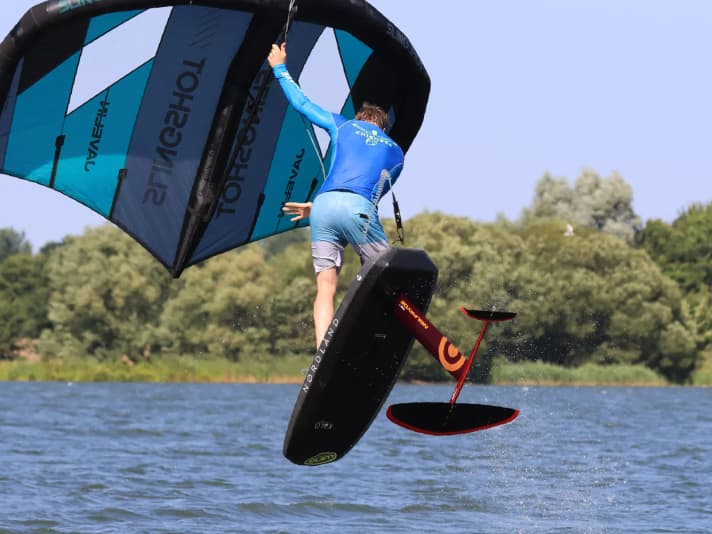
The modular foil system from manufacturer NeilPryde includes six front wing sizes between 1130 and 2270 cm2. We tested two different sizes, the Glide Surf HP 19 (1850 cm2) and the Glide Surf HP 15 (1490 cm2).
On land:
Both front wings tested fit on the long 79 mm aluminium fuselage. This sits on a 75 mm aluminium mast. The mast and fuselage are connected very solidly using three thick M8 Torx screws. The front wing is also attached using thick M8 Torx screws, although these appear to be less precise, with the screw heads protruding slightly on our test foil. The rear wing is supplied with a small washer, which makes it easy to adjust the wing and the foil can be tuned for more upforce or downforce if required.






With the NeilPryde Glide Surf HP Foil, the front wing and therefore also the pressure point is comparatively far forward due to the long fuselage. For this reason, we always had to mount the foil at the rear of the box on all the test boards we used. On foil boards with a traditionally far forward mounted box (e.g. Naish), it cannot be ruled out that the foil cannot be mounted as far back as necessary.WING tip: You can find an article on finding the right foil and loop positions here HERE .

On the water:
The large Glide Surf 19 with a surface area of 1850 cm2 develops lift early on when starting off, and due to the pressure point sitting far forward, you get a lot of pressure under the front foot. If you actively keep your board flat, you will get into the air early. Once lifted, the foil with the 1850 front wing is pleasantly stable and the long fuselage in particular contributes to above-average control around the transverse axis (nose up, nose down). Around the longitudinal axis, on the other hand, the Glide Surf HP 19 is surprisingly lively for a wing of this size. This means that loose turns and manoeuvres can be performed with little effort, but a little sensitivity is required and complete missteps are punished more quickly. As expected, the speed and jumping potential of the wing is moderate - but you can still make your first jumps with it.

In this respect, the smaller Glide Surf HP 15 with a surface area of only 1490 cm2 naturally offers more potential. This wing also provides a lot of lift when starting off and therefore also scores points in light winds, but pulls across the water a little faster in gusts than the 1850 - even though it is not one of the absolute rockets on the market compared to other wings in the 1500 class. Here too, the fuselage stabilises the transverse axis excellently, and in manoeuvres the foil offers a good mix of stability and turning ability that most wingers can actually live with. However, the fun of flying is spoilt at higher speeds by the loud whistling noise of the mast, regardless of which wing is fitted to the foil - an annoying flaw in the long run, but at least it ensures that all other water sports enthusiasts always know where you are.
The Glide Surf 15 is also a lot of fun when riding small waves, it is manoeuvrable and allows smooth turns. However, the mast length of 75 centimetres is quite short for wavy conditions.
At this point, you will find external content that complements the article. You can display and hide it with a click.
NeilPryde Glide Surf HP Foil - the conclusion:
The NeilPryde Glide Surf HP wings score as uncomplicated foils for light and medium winds. Both the 1850 and the 1490 front wing offer a lot of lift and thus ensure early take-off and a long flight through manoeuvres. Both wings are among the more manoeuvrable models - this pleases wingers with practice in tight manoeuvres such as foil 360s and when riding swell waves, but for complete beginners this can delay learning success somewhat. First jumps and freestyle tricks are also possible, although the moderate speed potential limits ambitions somewhat.
Early take-off; manoeuvrability
Pressure point far forward
Mast whistles; accuracy of fit of the screws

